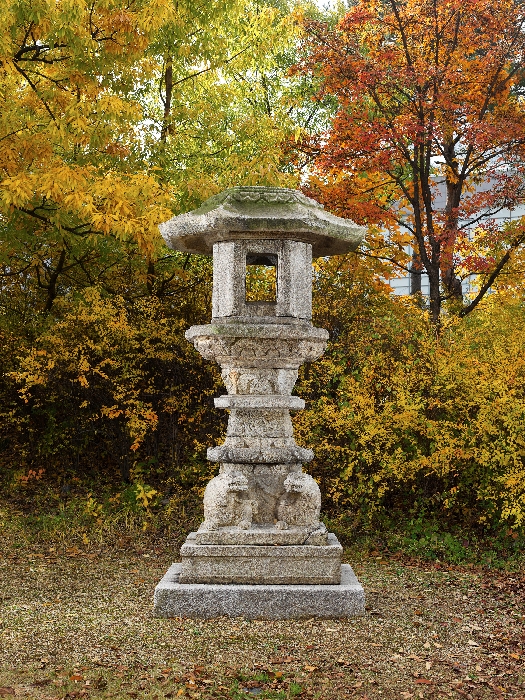
추천
고달사지 쌍사자 석등
두 마리 사자가 불발기집(火舍石)을 받치고 있는 매우 특이한 형태의 석등이다. 통일신라에서부터 이러한 형태의 석등이 등장하지만, 이 고달사 쌍사자 석등은 여느 쌍사자 석등과 달리 웅크린 사자가 불발기집을 받치고 있어 이채롭다. 이 석등은 고달사가 우리나라 3대 선원의 하나인 고달원(高達院)으로 명성을 떨치던 고려시대 초기에 만들어진 것으로 보인다.

go.kr 주소를 사용하는 누리집은 대한민국 정부기관이 관리하는 누리집입니다.
이 밖에 or.kr 또는 .kr등 다른 도메인 주소를 사용하고 있다면 아래 URL에서 도메인 주소를 확인해 보세요.

go.kr 주소를 사용하는 누리집은 대한민국 정부기관이 관리하는 누리집입니다.
이 밖에 or.kr 또는 .kr등 다른 도메인 주소를 사용하고 있다면 아래 URL에서 도메인 주소를 확인해 보세요.

두 마리 사자가 불발기집(火舍石)을 받치고 있는 매우 특이한 형태의 석등이다. 통일신라에서부터 이러한 형태의 석등이 등장하지만, 이 고달사 쌍사자 석등은 여느 쌍사자 석등과 달리 웅크린 사자가 불발기집을 받치고 있어 이채롭다. 이 석등은 고달사가 우리나라 3대 선원의 하나인 고달원(高達院)으로 명성을 떨치던 고려시대 초기에 만들어진 것으로 보인다.